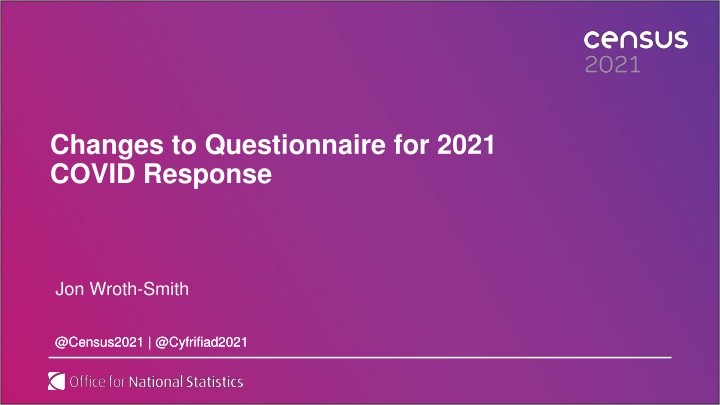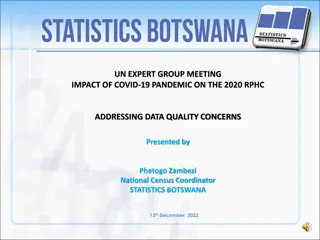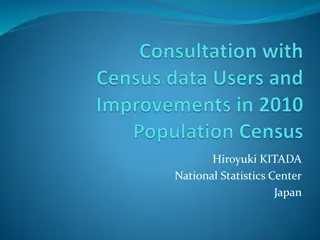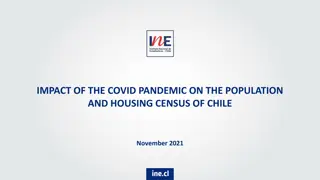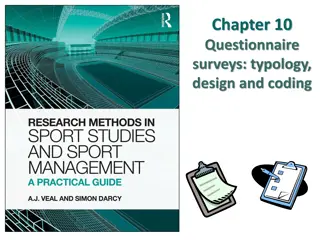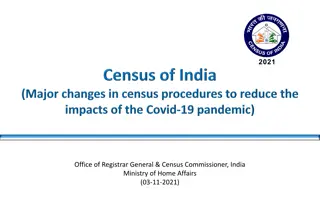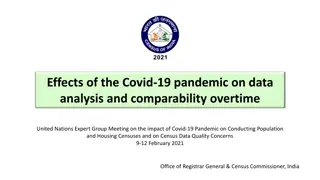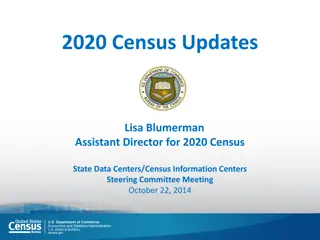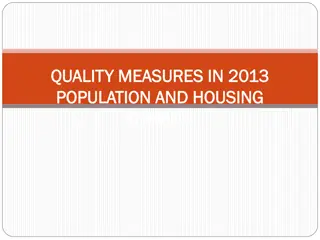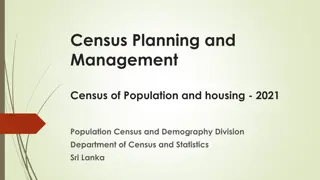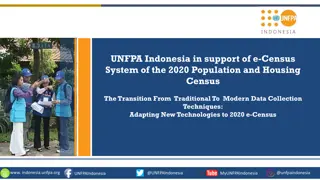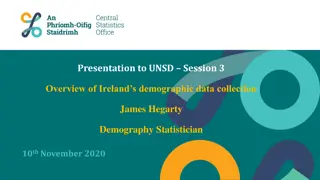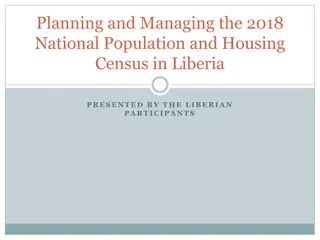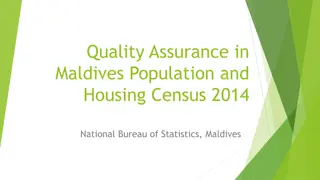Changes to 2021 Census Questionnaire for COVID Response Analysis
England & Wales Census in March 2021 analyzed the impact of COVID on questionnaire questions. The aim was to reduce respondent burden and data inconsistencies, aligning with user needs. Most questions remained unaffected, with key areas identified for potential impact. The approach involved revising guidance to ensure consistent responses, balancing electronic and paper questionnaire adaptations.
Download Presentation

Please find below an Image/Link to download the presentation.
The content on the website is provided AS IS for your information and personal use only. It may not be sold, licensed, or shared on other websites without obtaining consent from the author.If you encounter any issues during the download, it is possible that the publisher has removed the file from their server.
You are allowed to download the files provided on this website for personal or commercial use, subject to the condition that they are used lawfully. All files are the property of their respective owners.
The content on the website is provided AS IS for your information and personal use only. It may not be sold, licensed, or shared on other websites without obtaining consent from the author.
E N D
Presentation Transcript
Changes to Questionnaire for 2021 COVID Response Jon Wroth-Smith @Census2021 | @Cyfrifiad2021 @Census2021 | @Cyfrifiad2021
Background England & Wales Census took place in March 2021 during the pandemic ONS undertook an analysis of which questions were likely to be impacted and the additional guidance that should be included Objectives of this exercise were: - To reduce respondent burden - To reduce the impact on the call centre where there is uncertainty - To eliminate inconsistencies in how people interpret questions - To understand the data that we would collect and how this related to user need - To assistance with data collection from other ONS surveys Although users would ideally like to understand what the new normal is, they were aware that this would not exist by March 2021 and therefore are content for census to capture the current circumstances of the population.
Questions impacted Majority of the questions not impacted at all: Household: Relationships within the household, type of accommodation, self-containment of accommodation, type of central heating, Individual: Name, sex, date of birth, marital/ legal civil partnership status, national identity, qualifications, religion, Welsh language skills (Wales only), English language proficiency, Armed forces, gender identity, sexual orientation. Small number with a minor impact: Household: Tenure, number of cars or vans, number of bedrooms Individual: Intention to stay, main language, passports
Larger potential for impact 1. Who usually lives here 2. Second address 3. Students Term-Time Address 4. Usual address one year ago 5. Labour market and travel to work 6. Visitors name, sex, date of birth, usual address 7. Health reporting
Approach Through testing we revised question guidance to get people in different circumstances to answer consistently (for the most part) for their current circumstances. Changes could be made relatively easily to the electronic questionnaire (eQ) but it wasn t possible to make changes to paper questionnaires as printing was carried out in advance. We were conscious of the need to implement changes which had been tested to avoid unintended consequences Supporting guidance was available alongside the paper questionnaire to provide clarification. This included the contact centre and support provided by field staff
Changes made to Electronic Questionnaire Two additional screens and nineadditional pieces of question guidance were inserted to clarify the need for respondents to refer to the current context/timeframe, with the exception of the already backward looking Address one year ago question
Guidance Changes Alongside changes made to electronic questionnaire, guidance was also changed for: - Published supporting material and comms - Contact centre and online help - Field operations Specific guidance also issued around other topics (though no changes to questionnaire) - Students (clarifying the need to complete at term-term address) - Second homes (clarifying the need to complete a form for a second residence as well as main address)
Conclusions Emphasis was on respondents completing the census based on current circumstances Predicting what the new normal would risk significant inconsistencies and error Generally changes worked well with respondents understanding what we were asking Understanding user need and question testing were essential parts of this work ONS are developing plans to ensure that the census statistics can continue to relevant into the next decade e.g. using other data sources alongside or integrate with census data
